Same story as it's been since the beginning. One of the routes around here is tentatively getting completed in Q4 after 9 years of waiting, making the trip plausible, but not comfortable (if the power happens to be out as it does during the winter - SOL).Let me take a wild, pulling-it-out-of-a-dark-place guess:
Any number of locations in California will receive multiple times more votes than all of the North Country - from 54*N northwards, encompassing a few tens of thousands of miles of roads where you do NOT have any desire to run out of electrons - combined.
Meanwhile, SpCs continue their March through Bulgaria and Turkey - I’ve nothing but praise for Tesla doing so, AND one can Supercharge all the way to Everest base camp, but - 1.5 SpCs in all of the state that is over four times the size of California? And that number is also the sum total of ALL SpCs in that 2,750,000 square miles - ninety percent the area of the entire lower-48 states! -
I am, as all know, a very patient, very long term investor, and I likewise share the same zeitgeist with regard to the company’s structural buildout. I am willing to wait for the long term. But not for the hereafter.
Welcome to Tesla Motors Club
Discuss Tesla's Model S, Model 3, Model X, Model Y, Cybertruck, Roadster and More.
Register
Install the app
How to install the app on iOS
You can install our site as a web app on your iOS device by utilizing the Add to Home Screen feature in Safari. Please see this thread for more details on this.
Note: This feature may not be available in some browsers.
-
Want to remove ads? Register an account and login to see fewer ads, and become a Supporting Member to remove almost all ads.
You are using an out of date browser. It may not display this or other websites correctly.
You should upgrade or use an alternative browser.
You should upgrade or use an alternative browser.
Tesla Supercharger network
- Thread starter dsm363
- Start date
purplewalt
Active Member
I apologize if this is not in the correct thread.
Yesterday, I was charging at Melissa, TX, and a VW ID.4 pulls in.
After the driver got correctly aligned with the supercharger stall and charge port extension wire, I asked her two questions:
"Is this your first EV?"
And
"How much research (of alternative EVs) did you do before you made the decision/selection?"
Yes, first EV.
Brother (near Chicago) has worked for VW for 40 years. Purchase was based on his recommendation. They have had vehicle since July 2021.
The owner did have a device that they got off of Amazon.
And it seemed to fit and engage at the card charge port.
First there was a White light.
Then a Red light.
On the printed sheet at the bottom in RED:
This adapter is NOT COMPATIBLE and is not to be used with Tesla Super Charger Network.
Net result: no charge for the ID.4.
Might be able to use at a hotel or similar Tesla type charging station, just not at a Supercharger.
Yesterday, I was charging at Melissa, TX, and a VW ID.4 pulls in.
After the driver got correctly aligned with the supercharger stall and charge port extension wire, I asked her two questions:
"Is this your first EV?"
And
"How much research (of alternative EVs) did you do before you made the decision/selection?"
Yes, first EV.
Brother (near Chicago) has worked for VW for 40 years. Purchase was based on his recommendation. They have had vehicle since July 2021.
The owner did have a device that they got off of Amazon.
And it seemed to fit and engage at the card charge port.
First there was a White light.
Then a Red light.
On the printed sheet at the bottom in RED:
This adapter is NOT COMPATIBLE and is not to be used with Tesla Super Charger Network.
Net result: no charge for the ID.4.
Might be able to use at a hotel or similar Tesla type charging station, just not at a Supercharger.
Attachments
-
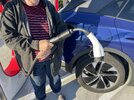 2FF4FE39-1917-4B39-B209-0864666D7377.jpeg551.1 KB · Views: 87
2FF4FE39-1917-4B39-B209-0864666D7377.jpeg551.1 KB · Views: 87 -
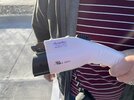 54D9497A-E11B-4673-B1DB-7D9A00F562B2.jpeg323.9 KB · Views: 69
54D9497A-E11B-4673-B1DB-7D9A00F562B2.jpeg323.9 KB · Views: 69 -
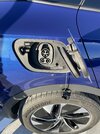 95C916D5-B278-47E9-82F7-18E301A9484F.jpeg476 KB · Views: 72
95C916D5-B278-47E9-82F7-18E301A9484F.jpeg476 KB · Views: 72 -
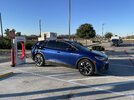 EF9E2663-3238-4D37-A3B1-8F7A6CB792E8.jpeg567.1 KB · Views: 78
EF9E2663-3238-4D37-A3B1-8F7A6CB792E8.jpeg567.1 KB · Views: 78 -
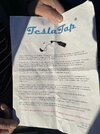 A93AEF0D-B7AF-4165-9D1B-13B601ED0E8A.jpeg497.3 KB · Views: 68
A93AEF0D-B7AF-4165-9D1B-13B601ED0E8A.jpeg497.3 KB · Views: 68
israndy
Supercharger Hunter
Yip, always gotta worry about those brothers giving bad advice. Especially when they are OBVIOUSLY biased.
Webeevdrivers
Active Member
The devices are common. We had one for our leaf that we used at wineries, restaurants etc with Tesla destination chargers. And nope. Not compatible with superchargers. Talking to some other EV owners they have been told that adapters are available for tesla charging facilities. Not wrong but not the full story.Yip, always gotta worry about those brothers giving bad advice. Especially when they are OBVIOUSLY biased.
srs5694
Active Member
I was in a virtual EV event yesterday, and somebody had a question about such an adapter. Another participant explained the difference between Level 2 and DC fast charging, and that the adapter would be useful for the former but not the latter. I then pointed out that Tesla has said it would open its Supercharger network to non-Teslas, but the timeline and technical details remain matters of speculation, with a few scant crumbs of information from press leaks and whatnot.Net result: no charge for the ID.4.
Might be able to use at a hotel or similar Tesla type charging station, just not at a Supercharger.
But it's obvious just from inspection that the adapter shown can't possibly be used for fast charging - it makes no connection to the fast charging pins on the CCS connector at the VW.
But it's obvious just from inspection that the adapter shown can't possibly be used for fast charging - it makes no connection to the fast charging pins on the CCS connector at the VW.
And so? Consumers are generally not engineers and don't look at pin layout...
That Tesla Tap adaptor is for use with Tesla Wall Connectors/Destination Chargers, as those in this thread are aware. The Tesla Tap instruction sheet does not clearly state that it is only for use with that type of charger. It should say that in bold right at the top, and the last sentence on the sheet should also be right at the top along with photos of a Supercharger and a Wall Connector.
That ID.4 owner did not understand the different between DC and AC charging and did not understand that US Tesla Superchargers are — for the time being — not compatible with non-Teslas.
It’s hard for many EV owners to understand all the nuances of EV charging. In this case, I fault Tesla Tap for not providing clearer instructions and also the ID.4 owner for not doing some basic research.
That ID.4 owner did not understand the different between DC and AC charging and did not understand that US Tesla Superchargers are — for the time being — not compatible with non-Teslas.
It’s hard for many EV owners to understand all the nuances of EV charging. In this case, I fault Tesla Tap for not providing clearer instructions and also the ID.4 owner for not doing some basic research.
Last edited:
lomed77
Member
I feel lots of people are going to buy these other makes and models and switch back to ice. Slowing the adoption rate. Hope i am wrongThat Tesla Tap adaptor is for use with Tesla Wall Connectors/Destination Chargers, as those in this thread are aware. The Tesla Tap instruction sheet does not clearly state that it is only for use with that type of charger. It should say that in bold right at the top, and the last sentence on the sheet should also be right at the top along with photos of a Supercharger and a Wall Connector.
That ID.4 owner did not understand the different between DC and AC charging and did not understand that US Tesla Superchargers are — for the time being — not compatible with non-Teslas.
It’s hard for many EV owners to understand all the nuances of EV charging. In this case, I fault Tesla Tap for not providing clearer instructions and also the ID.4 owner for not doing some basic research.
Webeevdrivers
Active Member
And some will switch to teslas like we did.I feel lots of people are going to buy these other makes and models and switch back to ice. Slowing the adoption rate. Hope i am wrong
purplewalt
Active Member
I do wonder, if in addition to Tesla Wall Connectors/Destination Chargers IF for the Urban chargers (78 kW)if that device might be able to be used?That Tesla Tap adaptor is for use with Tesla Wall Connectors/Destination Chargers, as those in this thread are aware. The Tesla Tap instruction sheet does not clearly state that it is only for use with that type of charger. It should say that in bold right at the top, and the last sentence on the sheet should also be right at the top along with photos of a Supercharger and a Wall Connector.
That ID.4 owner did not understand the different between DC and AC charging and did not understand that US Tesla Superchargers are — for the time being — not compatible with non-Teslas.
It’s hard for many EV owners to understand all the nuances of EV charging. In this case, I fault Tesla Tap for not providing clearer instructions and also the ID.4 owner for not doing some basic research.
Or, is it simply that DC power at Superchargers is not compatible with VW's architecture and charging capabilities?
If the power source must go through an inverter, it's a NO-GO.
OR
My other thought: Tesla KNOWS where every vehicle is, with the possible exception of (original) Roadsters. If the vehicle is "eligible" to be charged at a Supercharger, the car sends signal, Master computer okays power usage, and charge session commences.
Without the "okay" from Master computer (confirming that it is a valid vehicle), charging session does not begin.
I read recently that wrecked and rebuilt (by various individuals) Teslas ARE (finally) being given authority and access to charge at Superchargers...
...so that is kind of why I think the vehicle validation is a hidden door to access the actual power.
Once the OTHER manufacturers start paying fees to Tesla so that their cars/vehicles can become compatible with Tesla Supercomputers, it becomes whole other issue.
No, that adapter will not work for DC charging any brand of vehicle. It can only be used for AC charging.IF for the Urban chargers (78 kW)if that device might be able to be used?
srs5694
Active Member
A colleague of mine was visiting Boston recently. He rented a car that turned out to be a plug-in hybrid. He had no experience with EVs, but was curious. I showed him PlugShare, but neglected to point out the different types of charging. He turned up at a ChargePoint DC fast charger and was disappointed to discover that its CCS plug didn't fit the J1772 socket in the rental car. This guy is no dummy; he was simply unfamiliar with the different charging standards. With several different plug types in common use in North America, this will continue to be a problem for some time. It's why patient education is so critical. Better education than I provided my colleague, I'm afraid.But it's obvious just from inspection that the adapter shown can't possibly be used for fast charging - it makes no connection to the fast charging pins on the CCS connector at the VW.
Education can solve part of the problem. What would be even better is for ChargePoint (and others) to provide a couple of J1772 stalls along with the DC fast charging stalls. Hybrids could use the J plugs and if the DC fast station is broken, a slow charge J plug is better than being stranded completely.A colleague of mine was visiting Boston recently. He rented a car that turned out to be a plug-in hybrid. He had no experience with EVs, but was curious. I showed him PlugShare, but neglected to point out the different types of charging. He turned up at a ChargePoint DC fast charger and was disappointed to discover that its CCS plug didn't fit the J1772 socket in the rental car. This guy is no dummy; he was simply unfamiliar with the different charging standards. With several different plug types in common use in North America, this will continue to be a problem for some time. It's why patient education is so critical. Better education than I provided my colleague, I'm afraid.
Watts_Up
Well-Known Member
I noticed the same with some Tesla Superchargers providing (free I believe) J1772 chargers.What would be even better is for ChargePoint (and others) to provide a couple of J1772 stalls along with the DC fast charging stalls. Hybrids could use the J plugs and if the DC fast station is broken, a slow charge J plug is better than being stranded completely.
This could be very helpful if a CCS user get stranded.
A J1772 charger could even be useful for a Tesla user:
If local to the area, this user could charger for free,
Also I remember about a Youtube video where a Tesla user was not able
to use a Tesla Supercharger because he has a very low SOC and it was freezing.
But finaly he was able to use a public L2 charger.
Last edited:
srs5694
Active Member
That's a good suggestion. What's interesting, exciting, and frustrating about the current period of EV infrastructure deployment is that there are so many possibilities. Providers are basically throwing the spaghetti at the wall to see what will stick, which means that we don't know what it'll look like in 10 or 20 years. Currently I'm most concerned about public charging for people who live in apartments. Those of us who own single-family homes or condos with garages can install an L2 EVSE; but for EV adoption to become a practical possibility for everybody, L2 charging will have to become available in apartment parking lots and on street parking for urban areas where residents park on the street. DC fast charging at supermarkets and malls can be an option for some such people, but that tends to be more expensive than L2 charging. Workplace L2 charging can also help, but that doesn't work for everybody. (Some people work from home, are stay-at-home parents, are retired, etc.) Tesla used to have a program to provide free L2 Destination Chargers, mostly to hotels. Something like that aimed at apartments could help promote EV adoption.Education can solve part of the problem. What would be even better is for ChargePoint (and others) to provide a couple of J1772 stalls along with the DC fast charging stalls. Hybrids could use the J plugs and if the DC fast station is broken, a slow charge J plug is better than being stranded completely.
Essentially, apartments and houses without their own parking space don't support residents owning cars. Those folks already suffer from having to seek parking and moving their cars on street sweeping or snow days. That they don't support EVs is just a detail.on street parking for urban areas where residents park on the street
The apartment industry has seen the same issues as progress delivered conveniences and improvements from indoor plumbing to air conditioning to laundry facilities. Apartments that don't invest in modern features become the less desirable ones. Sure, folks can rent for cheaper but they're going to have to forego or work around the limitations.
I think that Los Angeles is doing a fairly good job at installing charging stations on lamp posts along the streets. Luckily, with payment systems, this solution can probably be sustainable. There will, undoubtedly, be initial startup problems with ICEing and long term there will be lack of availability, just as there is today with on-street parking in general.
That's a good suggestion. What's interesting, exciting, and frustrating about the current period of EV infrastructure deployment is that there are so many possibilities. Providers are basically throwing the spaghetti at the wall to see what will stick, which means that we don't know what it'll look like in 10 or 20 years. Currently I'm most concerned about public charging for people who live in apartments. Those of us who own single-family homes or condos with garages can install an L2 EVSE; but for EV adoption to become a practical possibility for everybody, L2 charging will have to become available in apartment parking lots and on street parking for urban areas where residents park on the street. DC fast charging at supermarkets and malls can be an option for some such people, but that tends to be more expensive than L2 charging. Workplace L2 charging can also help, but that doesn't work for everybody. (Some people work from home, are stay-at-home parents, are retired, etc.) Tesla used to have a program to provide free L2 Destination Chargers, mostly to hotels. Something like that aimed at apartments could help promote EV adoption.
Here in the Portland metro area my neighbor does the quotes for a large commercial electrical company. He said about 70-80% of their business right now is condo and apartment complexes putting in EV chargers. With the federal incentives coming to install EV charging he expects their business to pick up.
The problem is the pins in the connector. Tesla connectors do double duty, when AC charging the pins send AC current to the on board chargers. When DC fast charging (supercharging, any speed) those same pins take DC current and the car routes that straight to the battery. With J1772 they only do AC power. Additional pins are used for DC fast charging (the two monster pins on the bottom of the CCS connector). A CCS connector is just a J1772 connector with additional pins on the bottom. (in the US at least). No additional pins, no way to DC fast charge. Those adaptors that take Tesla to J1772 do not have the DC pins, only AC. They physically can't DC charge. As of now there are no adaptors out there that can make this happen. (Tesla to CCS, and again I'm talking USA. Can't speak for other regions.)I do wonder, if in addition to Tesla Wall Connectors/Destination Chargers IF for the Urban chargers (78 kW)if that device might be able to be used?
Or, is it simply that DC power at Superchargers is not compatible with VW's architecture and charging capabilities?
If the power source must go through an inverter, it's a NO-GO.
OR
My other thought: Tesla KNOWS where every vehicle is, with the possible exception of (original) Roadsters. If the vehicle is "eligible" to be charged at a Supercharger, the car sends signal, Master computer okays power usage, and charge session commences.
Without the "okay" from Master computer (confirming that it is a valid vehicle), charging session does not begin.
I read recently that wrecked and rebuilt (by various individuals) Teslas ARE (finally) being given authority and access to charge at Superchargers...
...so that is kind of why I think the vehicle validation is a hidden door to access the actual power.
Once the OTHER manufacturers start paying fees to Tesla so that their cars/vehicles can become compatible with Tesla Supercomputers, it becomes whole other issue.
Not only is there no adapter for Tesla to CCS DC, but superchargers do handshakes with the car to determine if the car is allowed to supercharge and whether it's a charged session or not. A car that is not in Tesla's database won't be recognized and won't charge. Any manufacturer that signs on to use superchargers will have to share information with Tesla about their fleet that are supercharger capable.
Similar threads
- Replies
- 24
- Views
- 2K
- Replies
- 1
- Views
- 242
- Poll
- Replies
- 357
- Views
- 23K
- Replies
- 7
- Views
- 430


